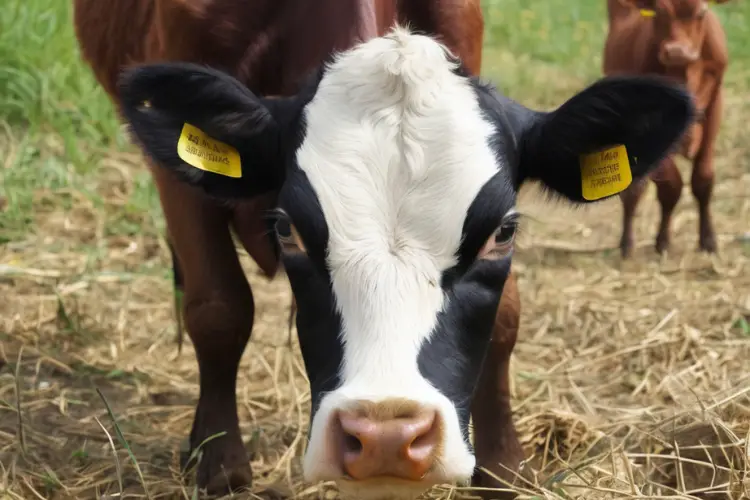Neonatal calf diarrhea, commonly known as scours, presents significant challenges to the health and well-being of young calves. In this blog post, we will provide farmers and veterinarians with in-depth strategies for preventing this condition.
By understanding the causes, implementing nutritional management, and adhering to preventive health measures, the risks associated with neonatal calf diarrhea can be mitigated.
In this blog post, we will also cover immediate care techniques and the strategic use of supplements and medications to ensure the best outcomes for calf health.
Key Takeaways
- Implementing a low calcium dry cow diet with less than 60g/head of calcium can prevent milk fever, which is closely related to neonatal calf diarrhea.
- Optimizing feed space and forage intakes, as well as introducing dietary calcium at calving (>120g/head), are crucial for maintaining calf health.
- Addressing high potash silage by supplementing magnesium, vitamin D, and anionic salts pre-calving helps in calcium mobilization.
- Preventive strategies, including vaccination protocols, hygiene practices, and environmental management, play a vital role in reducing the incidence of scours.
- Immediate and ongoing care for affected calves should include fluid therapy, nutritional support, and long-term monitoring to ensure recovery and prevent recurrence.
Understanding Neonatal Calf Diarrhea

Defining Scours and Its Impact on Calf Health
Neonatal calf diarrhea, commonly known as scours, is a prevalent condition affecting young calves, leading to significant health issues and economic losses. Scours is characterized by frequent, watery stools that can rapidly lead to dehydration and electrolyte imbalances in calves.
The impact of scours extends beyond the immediate health of the calf, as it can result in stunted growth, delayed development, and in severe cases, death.
The economic implications of scours are substantial, with costs accruing from veterinary treatments, medication, and potential loss of livestock.
Moreover, calves that recover from scours may still experience long-term effects, such as reduced weight gain and lower overall productivity. It is crucial for farmers to understand the severity of this condition and implement effective prevention and management strategies.
Here are some key points to consider regarding the impact of scours on calf health:
- Rapid dehydration and loss of electrolytes
- Increased susceptibility to secondary infections
- Necessity for intensive care and treatment
- Potential for long-term growth and productivity setbacks
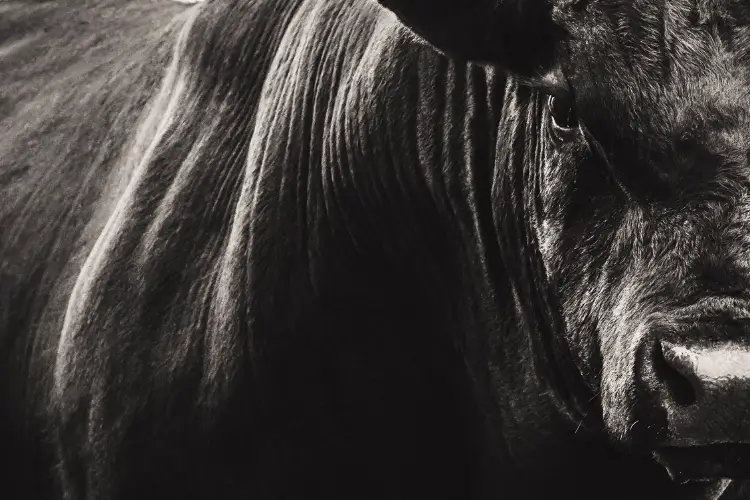
Common Pathogens and Causes of Neonatal Calf Diarrhea
Neonatal calf diarrhea, commonly known as scours, is a multifactorial disease that can be caused by a variety of pathogens including bacteria, viruses, and parasites. The most common pathogens responsible for scours are E. coli, rotavirus, coronavirus, and Cryptosporidium. These organisms can invade the gut lining and lead to diarrhea, which is often severe and can be life-threatening if not promptly addressed.
Environmental factors also play a significant role in the incidence of scours. Overcrowding, poor sanitation, and inadequate nutrition can all contribute to the spread of the disease. It is essential to understand that scours is not just a disease of the individual calf but is also influenced by the management practices in place.
Here is a list of some common causes of neonatal calf diarrhea:
- Bacterial infections (e.g., E. coli, Salmonella)
- Viral infections (e.g., rotavirus, coronavirus)
- Parasitic infections (e.g., Cryptosporidium, coccidia)
- Nutritional factors (e.g., overfeeding, poor quality colostrum)
- Environmental stressors (e.g., cold, damp conditions, overcrowding)
Recognizing the Symptoms and Assessing Severity
Recognizing the symptoms of neonatal calf diarrhea, or scours, is crucial for timely intervention and treatment. Early detection can significantly improve the prognosis for affected calves.
The primary symptom to watch for is watery, foul-smelling diarrhea, which may also contain blood or mucus. This can lead to rapid dehydration and electrolyte imbalances, necessitating immediate veterinary attention.
Assessing the severity of scours involves a clinical examination and may include a rating system similar to the one used for evaluating gum inflammation in other veterinary contexts. For instance, a system might categorize the severity as mild, moderate, or severe based on specific clinical signs and symptoms. Here is an example of how such a system could be structured:
- Mild: Loose stools without blood or mucus, calf is alert and feeding
- Moderate: Watery diarrhea with blood or mucus, calf shows signs of lethargy
- Severe: Persistent diarrhea, significant dehydration, calf is weak and unresponsive
Veterinarians often rely on their experience and a subjective assessment of the calf’s overall health to make a prognosis. The value of the calf and the likelihood of recovery may also influence decision-making regarding treatment.
Nutritional Management and Diet

Formulating a Low Calcium Dry Cow Diet
Implementing a low calcium dry cow diet is a fundamental preventive measure against milk fever. By keeping dietary calcium levels below 60g/head, the diet helps maintain an adequate balance of calcium during the critical transition period.
This approach is supported by the finding that cows offered hay had lower dry matter intake and tended to have lower serum haptoglobin concentration, indicating less metabolic stress.
In addition to managing calcium intake, providing a dry cow mineral with elevated magnesium content is beneficial. A high magnesium dry cow mineral, with levels above 30g/head, supports metabolic health and aids in the prevention of milk fever. Maintaining an optimal body condition score (BCS) within the range of 3.0-3.25 is also crucial, as it ensures cows have the necessary reserves for a smooth transition to lactation.
Here are some key points to consider when formulating this diet:
- Keep dietary calcium levels below 60g/head.
- Provide a high magnesium dry cow mineral (above 30g/head).
- Maintain an optimal BCS of 3.0-3.25.
- Monitor and adjust the diet to meet individual cow needs and farm conditions.
Optimizing Feed Space and Forage Intakes
Ensuring cows have adequate feed space at calving is critical for promoting optimal forage intakes. This is a pivotal step in providing a consistent and steady nutritional supply, which is vital during the transition into lactation. Adequate feed space allows for increased dry matter intake, which can help to prevent metabolic disorders associated with the calving period.
When considering the forage component of the diet, it’s important to focus on both quality and quantity. High-quality forages support rumen health and provide the necessary energy and nutrients for the cow. It’s also essential to monitor and adjust forage intake to meet the cow’s changing nutritional needs.
Supplementation of calcium at calving can be beneficial, with options tailored to individual farm requirements. Recommended intake levels should be maintained to ensure proper mineral balance. Addressing high potash levels in silage by supplementing with magnesium, vitamin D, and anionic salts can also be crucial in mobilizing calcium and maintaining a balanced diet.
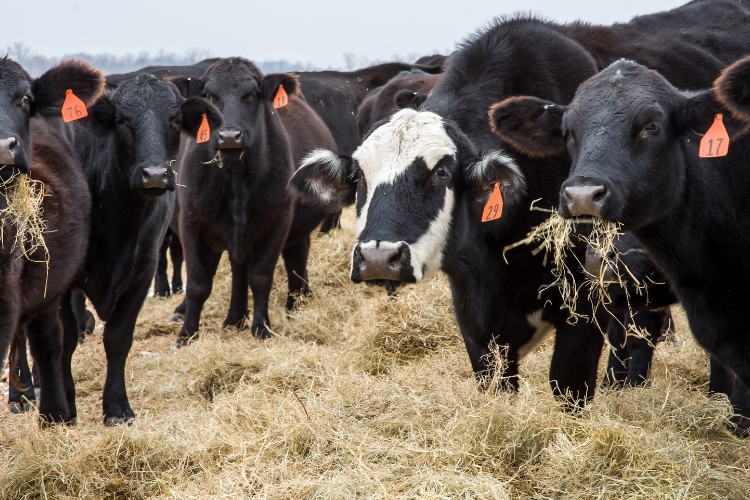
Addressing High Potash Silage and Dietary Adjustments
When dealing with silage that has high potash levels, often exceeding 2.5%, it is imperative to take additional steps to ensure the health and productivity of the dairy herd. Supplementing with extra magnesium, vitamin D, and anionic salts is recommended starting 21 days before calving to aid in mobilizing calcium. This is particularly important as nutrition is a key factor in enhancing dairy cow efficiency and reducing the excretion of nutrients.
To address the Dietary Cation-Anion Difference (DCAD) in grass silage, it’s beneficial to mix in low DCAD forages like straw. This helps to create a more balanced nutritional profile for the cows. The table below outlines the recommended supplements and their respective purposes:
| Supplement | Purpose |
|---|---|
| Magnesium | Aids in calcium mobilization |
| Vitamin D | Enhances calcium absorption |
| Anionic Salts | Lowers DCAD |
By implementing these dietary adjustments, farmers can better manage the nutritional intake of their herds, leading to improved health outcomes and productivity.
Preventive Health Measures

Vaccination Protocols and Hygiene Practices
Effective vaccination protocols are essential in preventing neonatal calf diarrhea. Vaccines should be selected based on prevalent pathogens and administered according to the manufacturer’s guidelines.
For instance, since S. Dublin is primarily a calfhood disease, it is recommended that producers look for a vaccine that can be administered to calves as early as 2 weeks of age.
Hygiene practices play a pivotal role in disease prevention. Aseptic techniques, including the use of sterile gloves, gowns, and surgical kits, are crucial when handling calves to minimize the risk of infection. Farmers should be educated on the importance of not touching the surgical field unless they have undergone adequate surgical preparation.
The following list outlines key hygiene practices to implement:
- Regular cleaning and disinfection of calf housing and equipment
- Proper hand hygiene before and after contact with calves
- Isolation of sick calves to prevent disease spread
- Disposal of manure and bedding in a sanitary manner
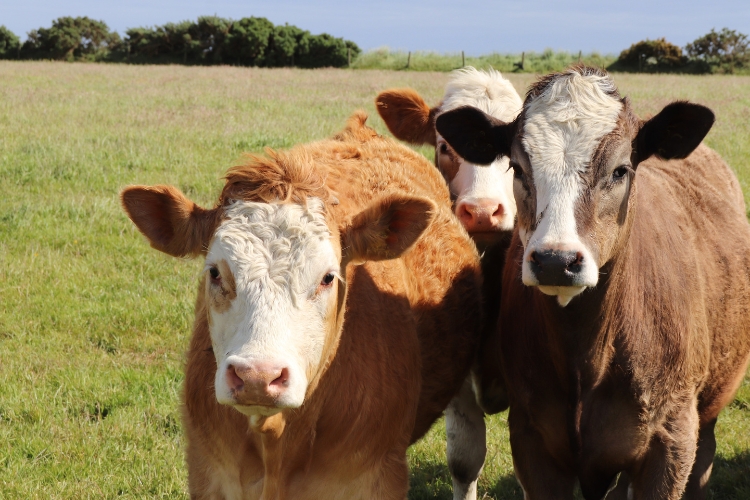
Environmental Management and Housing Conditions
Effective environmental management and appropriate housing conditions are critical in preventing neonatal calf diarrhea. Maintaining a clean and dry environment is essential to minimize the exposure of newborn calves to infectious agents. Regular cleaning and disinfection of calving areas and calf pens can significantly reduce the pathogen load.
Proper ventilation is another key factor in disease prevention. It helps to reduce humidity and ammonia levels, which can contribute to the spread of disease. Ensuring adequate space per calf and providing comfortable bedding are also important to promote calf health and reduce stress, which can predispose calves to illness.
- Regularly remove manure and soiled bedding
- Disinfect pens between calf occupants
- Provide dry, comfortable bedding
- Ensure proper ventilation and air quality
- Maintain appropriate calf density in housing
By adhering to these practices, farmers can create an environment that supports the immune system of the calves and discourages the proliferation of pathogens.
Monitoring Maternal Health to Prevent Transmission
A critical factor in the fight against scours is enhancing colostrum quality through proper maternal nutrition and management. The transfer of passive immunity is essential for the newborn calf’s defense against pathogens. By monitoring the health and nutrition of the mother, particularly in the weeks leading up to calving, farmers can significantly reduce the risk of neonatal calf diarrhea.
Effective prevention of milk fever, a condition closely associated with hypocalcemia, is also crucial. Implementing a low calcium dry cow diet and managing dietary transitions can help maintain calcium balance and reduce the incidence of milk fever, which is linked to a host of other health issues in postpartum cows.
The following list outlines key strategies for monitoring maternal health:
- Regular veterinary check-ups to assess overall health and nutritional status.
- Adjusting diets to prevent nutritional deficiencies and imbalances.
- Ensuring adequate intake of colostrum by the newborn calf.
- Implementing vaccination protocols to boost the mother’s immunity.
Immediate and Ongoing Care Strategies

Initial Treatment Approaches for Affected Calves
When confronted with neonatal calf diarrhea, timely and effective intervention is crucial. Immediate isolation of affected calves is the first step to prevent the spread of infection. Following isolation, a thorough clinical assessment should be conducted to determine the severity of dehydration and electrolyte imbalance.
Treatment typically begins with fluid therapy, which is essential to correct dehydration and restore electrolyte balance. The choice of fluid and the route of administration will depend on the calf’s condition. Oral electrolyte solutions are often used for mild cases, while intravenous fluids may be necessary for more severe dehydration.
Here is a basic outline of the initial treatment steps:
- Isolate the affected calf to contain infection.
- Conduct a clinical assessment to evaluate dehydration and electrolyte status.
- Administer fluid therapy tailored to the calf’s needs.
- Monitor the calf’s response to treatment and adjust as necessary.
It’s important to note that while these measures can limit the loss of affected calves in the majority of cases, ongoing care and monitoring are essential for full recovery.

Fluid Therapy and Nutritional Support
Effective fluid therapy is crucial for calves suffering from neonatal diarrhea to prevent dehydration and electrolyte imbalances. Oral electrolyte solutions (OES) are commonly used to maintain hydration and provide essential nutrients. The duration of OES administration can significantly influence calf behavior and biochemical measures, as indicated by recent studies.
Nutritional support during this period should focus on easily digestible feeds that do not exacerbate the condition. A gradual reintroduction to normal diet is recommended once the calf shows signs of recovery. It’s important to monitor the calf for any signs of discomfort or innappetance as these could indicate complications or the need for adjustments in fluid or feed intake.
Below is a list of considerations for fluid therapy and nutritional support:
- Monitor hydration status and administer OES as needed
- Provide a diet low in bulk to ease digestion
- Gradually reintroduce normal feeds while monitoring for adverse reactions
- Observe for signs of pain, toxemia, or other complications
Long-term Monitoring and Aftercare
After the initial treatment of neonatal calf diarrhea, long-term monitoring and aftercare are crucial to ensure full recovery and prevent relapses. Regular follow-up examinations are necessary to monitor the calf’s progress and to identify any signs of complications such as peritonitis, innappetance, or toxemia. It’s important to observe the calf for any unresolved clinical signs that may indicate treatment failure or the need for further intervention.
Medication may be required as part of the aftercare process. NSAID anti-inflammatory drugs like Flunixin or Meloxicam can be administered after 48-72 hours if symptoms persist. Additionally, any surgical site infections should be treated promptly to prevent further complications.
The table below outlines potential complications and reasons for treatment failure that should be monitored during the aftercare period:
| Complication | Possible Indicators | Reasons for Treatment Failure |
|---|---|---|
| Peritonitis | Pyrexia, depression, diarrhea | Contaminated surgical site |
| Unresolved Signs | Persistent clinical symptoms | Wound dehiscence |
| Innappetance | Lack of appetite | Abdominal adhesions |
| Toxemia | Signs of infection and toxemia | Toxic shock |
| Death | – | Unidentifiable/unresolved problem |
Prognosis is dependent on the findings and diagnosis, and long-term care should be adjusted accordingly. It is essential to maintain a clean environment and manage any post-operative needs, such as wound cleaning and the application of topical antibiotic sprays, to support the healing process.
Strategic Supplementation and Medication

Introducing Dietary Calcium at Calving
Providing supplementary calcium at calving is a critical step in preventing metabolic disorders such as milk fever, or hypocalcaemia, which can manifest around this time. Supplemental calcium options, including calcium/electrolyte drinks, calcium boluses, and post-calver minerals, are tailored to meet individual farm needs, with a recommended intake of >120g/head to ensure adequate calcium levels.
Subclinical hypocalcaemia affects approximately 50% of adult dairy cattle and can have a significant economic impact due to decreased dry matter intake, increased risk of secondary diseases, and reduced milk production. To mitigate these risks, a strategic nutritional approach is essential, particularly for breeds like Jerseys, which are more susceptible to calcium deficiencies.
Efforts to enhance calcium metabolism in fresh cows are not only beneficial for the animals’ health but also prove financially rewarding. A comprehensive strategy that includes breed-specific factors and calcium-rich supplementation is key to preventing subclinical milk fever and maintaining the health and productivity of the dairy herd.
Utilizing Electrolyte Solutions and Probiotics
The strategic use of electrolyte solutions is vital in managing neonatal calf diarrhea, as they help to replenish lost fluids and maintain hydration.
It’s essential to choose a solution that provides a balanced mix of electrolytes to match the calf’s needs. Probiotics, on the other hand, can play a crucial role in restoring and maintaining a healthy gut flora, which is often disrupted during episodes of scours.
When selecting probiotics, it’s important to consider the specific strains and their efficacy in supporting calf health. Research, such as the study on the effect of dietary supplementation of chestnut and quebracho tannin extract, indicates potential benefits in reducing diarrhea occurrence. Below is a list of considerations for incorporating these supplements into a calf’s diet:
- Assess the calf’s hydration status and choose an appropriate electrolyte solution.
- Monitor the response to electrolyte therapy and adjust as needed.
- Introduce probiotics with proven benefits for neonatal calves.
- Evaluate the impact of supplementation on calf performance and health.
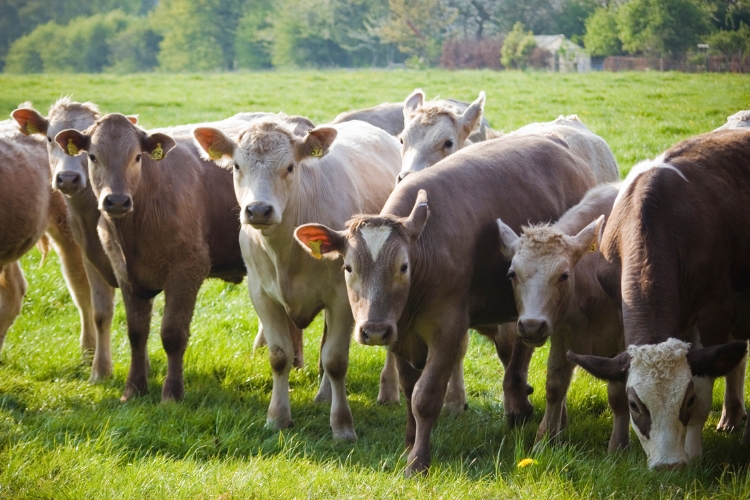
Antibiotic Use and Resistance Considerations
The judicious use of antibiotics in the treatment of neonatal calf diarrhea is a critical component of veterinary care. Antibiotics should be administered with precision, targeting the specific pathogens identified and considering the timing of treatment. For instance, achieving maximum tissue concentrations of antibiotics prior to surgical interventions is essential.
However, the practicality of strict surgical antibiotic protocols on farms is often challenged by the timing of injections and the availability of licensed products. It is crucial to weigh the necessity of antibiotic use against the potential for developing antimicrobial resistance.
A study highlighted the impact of dietary zinc supplementation on the phenotypic antimicrobial resistance in pre-weaned dairy calves, suggesting that nutritional strategies may also play a role in managing antibiotic use.
When dealing with surgeries such as flank laparotomies, which can range from clean to highly contaminated, a broad-spectrum antibiotic is generally recommended.
The decision to use antibiotics should be guided by the initial clinical assessment, with the understanding that potential contaminants could be gram-negative from the gastrointestinal tract or gram-positive from the skin.
Conclusion
In conclusion, preventing neonatal calf diarrhea, or scours, is a multifaceted endeavor that requires diligent management practices and a proactive approach to calf health. From optimizing feed and forage intakes to addressing dietary preparations and aftercare, each step plays a critical role in safeguarding the well-being of neonatal calves.
While it may not be possible to completely eradicate all risk factors, implementing strategies such as low calcium diets for dry cows, monitoring for signs of discomfort, and providing immediate aftercare can significantly reduce the incidence of scours. Additionally, understanding the importance of calcium metabolism and the impact of subclinical conditions like milk fever underscores the need for a strategic nutritional approach.
By combining these efforts with breed-specific considerations and appropriate supplementation, farmers can enhance the health and productivity of their herds, ensuring a successful transition for both cows and calves.
FAQs:
What is neonatal calf diarrhea (scours) and how does it impact calf health?
Neonatal calf diarrhea, commonly known as scours, is a condition characterized by frequent and watery bowel movements in young calves. It can lead to severe dehydration, electrolyte imbalances, and can be fatal if not treated promptly. Scours impact calf health by impairing growth, weakening the immune system, and increasing the risk of further infections.
What are the common pathogens that cause neonatal calf diarrhea?
Common pathogens that cause neonatal calf diarrhea include bacteria such as Escherichia coli, Salmonella spp., and Clostridium perfringens, viruses like rotavirus and coronavirus, and parasites such as Cryptosporidium parvum and Eimeria spp. (coccidia).
How can a low calcium dry cow diet prevent milk fever and related health issues in calves?
A low calcium dry cow diet helps prevent milk fever, a condition related to hypocalcemia in dairy cows. By keeping dietary calcium levels below 60g/head, it encourages the cow’s body to efficiently regulate calcium levels during calving, which is critical for maintaining overall health and reducing the risk of neonatal calf diarrhea through improved maternal health.
What are the key nutritional strategies to optimize calf health during the transition period?
Key nutritional strategies during the transition period include ensuring adequate feed space and forage intakes, addressing high potash silage by supplementing extra magnesium and anionic salts, and introducing dietary calcium at calving with a recommended intake of >120g/head to support a steady nutritional supply and enhance calcium metabolism.
What immediate care strategies should be taken for a calf affected by scours?
Immediate care for a calf affected by scours includes providing prompt fluid therapy to combat dehydration and electrolyte imbalances, administering appropriate medications as prescribed by a veterinarian, and ensuring the calf is kept warm and comfortable in a clean environment to support recovery.
How can environmental management and housing conditions prevent neonatal calf diarrhea?
Good environmental management and proper housing conditions can prevent neonatal calf diarrhea by reducing the exposure of calves to pathogens. This includes maintaining clean and dry bedding, ensuring adequate ventilation to minimize humidity and airborne pathogens, and practicing good hygiene with regular disinfection of the calf housing and feeding equipment.

